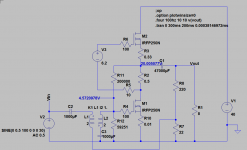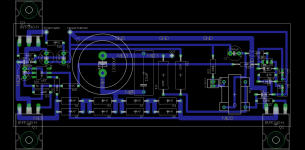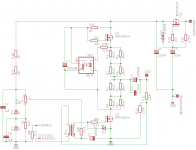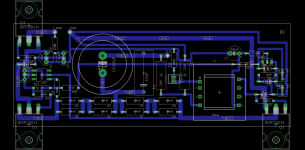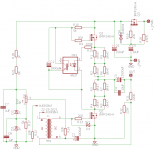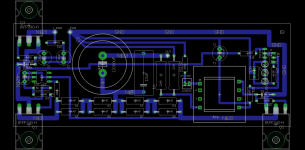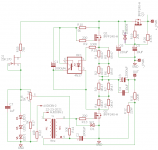I am surprised there have not been many builds completed using this amazing circuit.
I was all set to try out a scaled down, DC-coupled version using IXYS IXFH74N20P but finally got scared off by the continued discussion of bias instability. SPICE also seems to suggest the amp will take quite a while to stabilize. That could spell doom for my speakers if not AC coupled. Looks like the IXFH74N20P will end up in an Aleph-style amp now.
I recently modeled a version in SPICE using the IXYS IXTH16N50D2 depletion mode FETs. It looks promising and is even simpler to build. With 24V rails and 2A bias, it may achieve just shy of 25W at slightly over 1% (simulated) THD.
When building a scaled down version of this circuit using IRFP250 what voltage would you use?
You can easily adapt this circuit to almost any power-level you want. Anything between a few mW preamp to several kW with huge banks of water-cooled paralleled 1700 volts SIC devices.
A guess you could build a version that runs from a car battery (12 volts) using low voltage fets. You would get a half watt or so.
With 30 volt powersupply you get 7 - 12 watts or so. An nice and easy project based on a few IRFP140/150/240/250/044/054 or similar devices.
Cheers,
Johannes
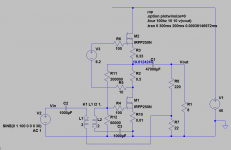
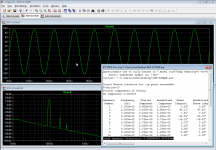
I think this is an easier way to properly bias the bottom fet. It is a simple two resistor voltage-devider. 200 kohm from output to the secondary coupled to the gate of the bottom fet, and a 60 kohm (100 kohm multiturn potentiometer) from there to ground (R11 and R12).
The mu-follower (SRPP) dynamic current-source is battery-biased for simplicity and to keep the circuit reasonably clean. Use whatever method of a reference voltage you find most appropriate.
20 volt output into 8 ohms load with 0,34% THD from a 40 volt power-supply, mostly second harmonic with a small touch of third increasing with increased output wattage - as per Nelson Pass BAF2015 talk.
Cheers,
Johannes
Last edited:
View attachment 573182
A slightly cleaner and clearer circuit drawing.
R11 is 200 kohm and R12 is a 100 kohm multiturn potentiometer. You would use the 100 kohm potentiometer to adjust the amp to a good working point (20 volt output for a 40 volt power supply).
Cheers,
Johannes
What way would you go about getting the V3 power source of 6.2V?
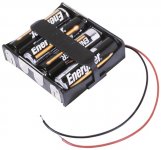
The easiest way would be a battery pack. 4 AA batteries in series gives about 6,2 volts.
Use the simple and smart method Nelson Pass use in the original 50 watt BAF2015 Schade amp.
You can use a small mosfet the same way as Nelson Pass use a bipolar transistor in ACA.
There are many ways to do this. I used the battery version in my sim because I was tired and wanted to post the schematic before going to bed. It is a very simple dynamic current source with few parts. I have tried it in real amps and it works like a charm.
Cheers,
Johannes
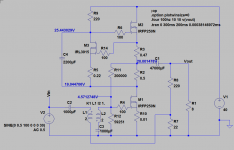
Here is one way to create a voltage-reference for the dynamic current source.
A simple mosfet, preferable a logic gate IRL510 or similar. You will have to measure the Vgs of the device to calculate the correct values R2 and R3. If you use a normal IRF510 or similar with a Vgs of 4,5 volts or so then R2 and R3 needs to be increased substantially. I don't recommend using IRF series or other devices with a high Vgs if you are not going to be running very large amounts of steady current through your amp.
The 4N37 optocoupler seems like a very neat solution. Since Nelson Pass recommends those I guess the 4N37 is preferable. I have never tried it though.
I just want to show that there are several possible ways to do it.
The transformer Schade feedback does seem to "trioditize" the gain device a lot. I am going to try this soon. I guess it does sound marvelous and opens up a lot of possibilities.
Cheers,
Johannes
https://www.youtube.com/watch?v=oz3h9dJ-DgY
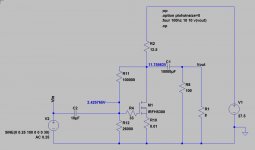
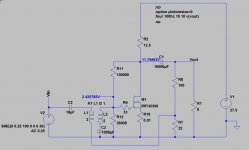
I quickly inserted an Lundahl LL1527 for some transformer based Schade feedback into the above simple no feedback Zen amp.
The resulting circuit can be seen in circuit number two in this thread.
I just saw that I missed a resistor value. The no feedback Zen has 0,75 ohm source-resistance as a local source-degeneration to help linearize the quite "happy" little IRLP3034.
This 0,75 is removed in the transformer Schade feedback version.
I use some DC negative feedback in the form of 100 kohm from drain to gate and a 100 kohm multiturn potentiometer (26 kohm in this circuit) from gate down to ground. This stabilizes the bias and current.
I use a 27,5 volt powersupply.
It sounds very nice. The IRLP3034 is tamed down a bit by this feedback. The amp without feedback has a more vivid, open and alive reproduction of music, but the transformer based Schade feedback sounds much more smooth and linear. It is still very nice sounding, but not as immediate and vivid as the one without feedback.
I don't want to write about stuff I only experience through LTSpice and theory.
I built this simple single channel to verify the simple DC-feedback bias, and it works like a charm.
The transformer based Schade feedback seems very nice and promising. I am constantly impressed by Nelson Pass genius and many brilliant ideas.
Cheers,
Johannes


I quickly inserted an Lundahl LL1527 for some transformer based Schade feedback into the above simple no feedback Zen amp.
The resulting circuit can be seen in circuit number two in this thread.
I just saw that I missed a resistor value. The no feedback Zen has 0,75 ohm source-resistance as a local source-degeneration to help linearize the quite "happy" little IRLP3034.
This 0,75 is removed in the transformer Schade feedback version.
I use some DC negative feedback in the form of 100 kohm from drain to gate and a 100 kohm multiturn potentiometer (26 kohm in this circuit) from gate down to ground. This stabilizes the bias and current.
I use a 27,5 volt powersupply.
It sounds very nice. The IRLP3034 is tamed down a bit by this feedback. The amp without feedback has a more vivid, open and alive reproduction of music, but the transformer based Schade feedback sounds much more smooth and linear. It is still very nice sounding, but not as immediate and vivid as the one without feedback.
I don't want to write about stuff I only experience through LTSpice and theory.
I built this simple single channel to verify the simple DC-feedback bias, and it works like a charm.
The transformer based Schade feedback seems very nice and promising. I am constantly impressed by Nelson Pass genius and many brilliant ideas.
Cheers,
Johannes
Last edited:
View attachment 573288
Here is one way to create a voltage-reference for the dynamic current source.
A simple mosfet, preferable a logic gate IRL510 or similar. You will have to measure the Vgs of the device to calculate the correct values R2 and R3. If you use a normal IRF510 or similar with a Vgs of 4,5 volts or so then R2 and R3 needs to be increased substantially. I don't recommend using IRF series or other devices with a high Vgs if you are not going to be running very large amounts of steady current through your amp.
The 4N37 optocoupler seems like a very neat solution. Since Nelson Pass recommends those I guess the 4N37 is preferable. I have never tried it though.
I just want to show that there are several possible ways to do it.
The transformer Schade feedback does seem to "trioditize" the gain device a lot. I am going to try this soon. I guess it does sound marvelous and opens up a lot of possibilities.
Cheers,
Johannes
Many thanks for going to the trouble and time to do this for me Johannes. A scaled down version of this amp is certainly in my bucket list.
PCB work
I thought I'd try and knock out a pcb for scaled down version. The transformer used is a completely random part - if anyone has a jensen model for eagle (PCB mount) I'll add it in. I've left a bit of space for that... Dimensions are constrained by the version of eagle I have.
Planned supply voltage is about 36V, and current (as I understand it) should be about 1.6A. I intend to use some IRF150's I've got here on hand for it.
I'm rubbish at producing PCB's at home, so I might put the ground plane on the other side and then send it off to a PCB manufacturer.
Thoughts and comments welcome.
I thought I'd try and knock out a pcb for scaled down version. The transformer used is a completely random part - if anyone has a jensen model for eagle (PCB mount) I'll add it in. I've left a bit of space for that... Dimensions are constrained by the version of eagle I have.
Planned supply voltage is about 36V, and current (as I understand it) should be about 1.6A. I intend to use some IRF150's I've got here on hand for it.
I'm rubbish at producing PCB's at home, so I might put the ground plane on the other side and then send it off to a PCB manufacturer.
Thoughts and comments welcome.
Attachments
Hi there wdecho,
Have I got the secondary winding inverted? I've followed the schematic, so if the winding is not correct on the pcb, I'll have to take a closer look at the jensen part in Eagle (good eyes!).
Cheers!
Have I got the secondary winding inverted? I've followed the schematic, so if the winding is not correct on the pcb, I'll have to take a closer look at the jensen part in Eagle (good eyes!).
Cheers!
Attachments
Last edited:
It looks correct now. My understanding is the circuit inverts the signal and using the input transformer with the secondary inverted corrects this without having to invert the speaker wires. Nelson comments on this in the talk. Your first schematic will work but one would have to invert at the speaker.
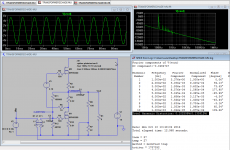
Here is a simulation with only 15 volts from the powersupply.
It seems to work good enough that I would build it without any hesitation if I wanted to build a small one watt amp with transformer based Schade feedback.
Quite nice little project for anyone sitting with a small 15 volt 4 ampere switching powersuply and a handful of small IRLB3813, IRLP3034, IRL540 or similar logic gate devices.
Cheers,
Johannes
MOSFETs sounds better when Vgs (you probably mean Vds) is higher
This is generally true but somewhat modified by the use of low voltage mosfets like the IRLB3813, IRF3711 among others.
I have built and listened to quite a lot of different amplifiers with IRLB3813 and IRF3706, IRLP3034, IRFP7430 and they sound great at reasonable spl levels (considering the low output power). If I use an IRFP150 or IRFP250 in the same circuit it does not sound nearly as good - or even outright despicable in some cases.
My simple simulation above was mostly meant as an answer to an earlier post about the feasibility of a low powered version of Nelson Pass BAF2015 transformer Schade feedback amp.
Cheers,
Johannes
- Home
- Amplifiers
- Pass Labs
- 50w Single-Ended BAF2015 Schade Enabled
